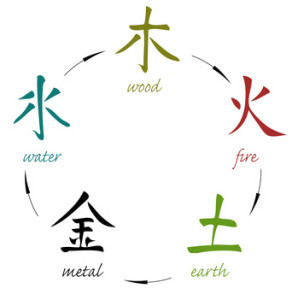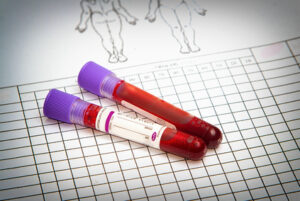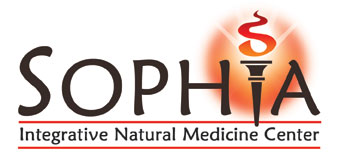How to Regain Your Health with Integrative Natural Medicine
Chinese medicine is one of the oldest functional medical systems still practiced. It began as a shamanic healing practice among the early Neolithic tribes of China. At that point in time stone, bone, and thorn needles were used. In some circles it was believed that bee stingers were the original needle. The understanding of health and sickness was characterized by pernicious spirits, spiritual lessons (Karma), and not being in balance with the laws of nature. Over time, as civilization began to flourish, so did the understanding of medicine, and the practice. It was brought out of the religious arena and into the realm of the scholars and scientists. Taoist sects began to study medicine, and build upon ancient theories with research and observation. The Taoist scholars’ would keep all that was beneficial, and throw out anything that didn’t work. Over a 5000 year period, Chinese Medicine has evolved, and continues to do so, into one of the most effective forms of functional medicine.
Chinese medicine is the most practiced form of medicine in the world. Chinese Medicine makes up over 50% of the medical treatments used in China, the world’s largest population, and has been gaining popularity all over the world. The reasons are simple. It treats a wide variety of conditions, safe, effective, there are little to no side effects, and its cost efficient. Where else can someone with bursitis, GERD, insomnia, and anxiety be treated with one gentle, safe treatment? How many doctor’s visits, medications, and time lost for each condition?
Chinese medicine is based on the theory of balance and optimal function, both of which are lost in the Western Medical Model. One of the most important treatments of Chinese Medicine is knowledge of self-care. By educating the patients on stress reduction techniques, proper diet, rest and movement; one can prevent most diseases. Balance pertains to the internal: regulating emotions, moderating food, sleep, and activities. However, it also pertains to the external: eating seasonally, dressing appropriately for the weather, understanding the rhythms and cycles of nature and preparing the body for them, (epigenetics). Optimal function is the part of Chinese medicine that corrects any weaknesses or imbalances in the body. If the body was performing at optimal function, would you be sick? The concept of optimal function and health can be viewed as a horse drawn carriage; the carriage can only be pulled as fast as the weakest horse. If one organ is not functioning optimally, it will lead to disease.
Qi, Blood, and Essence
According to Chinese Theory, there are three main substances, Qi, Blood, and Essence. All three are metaphorical and actual substances.
Qi has many translations; it is the most mysterious of the three to the western mind. In many cases it is just summed up as energy, or life force. This is correct to an extent, if it is based on one translation, however; Qi has a spectrum.
The character for Qi is a fire, a grain of rice, and steam, which one could see as states of matter, oxygen, or even a chemical process (cooking). The ambiguity of the term allows its versatility, but doesn’t lessen its significance; especially when it comes to the nature of one’s health through the lens of quantum physics. The best description of Qi is functionality, or the potential to do a function, like the molecule ATP. Our bodies’ cells create ATP, Adenosine Triphosphate, which is a chemical energy that allows the cell to do work. Every single thing you do depends on your body’s ability to produce ATP. When a cell breaks down a molecule of ATP, it unleashes chemical energy to produce a function. As long the body’s cells can produce ATP, the cell will be able to function. A group of cells with the same functions create a tissue. Tissues group together to make organs, and organs group together to create systems.
Blood in Chinese Medicine is very similar to blood in Western Medicine. Blood nourishes the body. Blood also is considered a lubricant, and is vital for optimal health. There are more abstract ideas of Blood in Chinese Medicine, but they do not fit the scope of this lecture.
Essence, also known as Jing, is another ambiguous term. It can be considered the DNA, or genetic make-up, the blueprint of you. It is closely related to sperm and ovaries, and represents your constitution, how strong or weak you are from birth. This can be seen as an early theory of epigenetics.
There other concepts of fluid physiology, various forms of Qi, as well as the concept of the three treasures, however; they do not fall into the scope of this lecture.
Yin Yang Theory
Four Main Aspects of Yin and Yang Relationship
1. Yin-Yang are opposites: This opposition is relative, and can only be spoken of in relationships. For example: Water is Yin relative to steam, but Yang relative to ice. Yin and Yang are never static but in a constantly changing balance.
2. Interdependent: Can not exist without each other The Tai Ji (Supreme Ultimate) diagram shows the relationship of Yin and Yang and illustrates the interdependence of Yin and Yang. Nothing is totally Yin or totally Yang. Just as a state of total Yin is reached, Yang begins to grow. Yin contains the seed of Yang and vise versa. They constantly transform into each other. For Example: no energy without matter, no day without night. The classics state: “Yin creates Yang and Yang activates Yin”. They create a whole together, the two sides of a coin.
3. Mutual consumption of Yin and Yang: Relative levels of Yin Yang are continuously changing. Normally this is a harmonious change, but when Yin or Yang are out of balance they affect each other, and too much of one can eventually weaken (consume) the other. There are four possible states of imbalance: Preponderance (Excess) of Yin, Preponderance (Excess) of Yang, Weakness (Deficiency) of Yin, and Weakness (Deficiency) of Yang.
4. Inter-transformation of Yin and Yang: One can change into the other, but it is not a random event, happening only when the time is right. For example: Spring only comes when winter is finished.
Wu Xing
Wu Xing, or 5 phases, represent the cycles of nature and life. It is a classification system of Yin and Yang. Each phase is represented by an element: Earth, Metal, Water, Wood, and Fire. Each element has a list of correspondences. These correspondences are used to diagnose and to treat the imbalance.
 These concepts sound very different from Western medical thought, however; at the time of Hippocrates, there were too elemental forces (air, water, earth, fire), and the 4 humors, or temperaments. Classifications of disease, illness, and imbalances due to constitutional types, elemental affinity, and diets have been found in all cultures. It has been through the effectiveness of the system, and the in depth cataloguing of correspondences that has made Chinese medicine still a viable medical modality.
These concepts sound very different from Western medical thought, however; at the time of Hippocrates, there were too elemental forces (air, water, earth, fire), and the 4 humors, or temperaments. Classifications of disease, illness, and imbalances due to constitutional types, elemental affinity, and diets have been found in all cultures. It has been through the effectiveness of the system, and the in depth cataloguing of correspondences that has made Chinese medicine still a viable medical modality.
Wu Xing, is really a tool to keep one’s health in balance, with the seasons, times of day, and within itself. There is a law of generation, and a law of control. Each Element creates and controls another Element. This tool has been used for thousands of years to keep countless people in a healthy state of balance within themselves and with their environment.
Treating with the 5 Branches of Chinese Medicine
Chinese Medicine has 5 branches of medicine: Acupuncture, Herbal Medicine, Dietary Therapy, Tui Na, and Qi Gong or Exercise Therapy.
 Acupuncture includes the insertion of filiform needles to help regulate the body’s nervous system, improve circulation, and cellular function. It also includes the use of mugwort, an herb burned to improve circulation and cellular function, and removal of cellular waste. Gua Sha which reduces lymphatic congestion and improves lymphatic circulation, and increases immune system function.
Acupuncture includes the insertion of filiform needles to help regulate the body’s nervous system, improve circulation, and cellular function. It also includes the use of mugwort, an herb burned to improve circulation and cellular function, and removal of cellular waste. Gua Sha which reduces lymphatic congestion and improves lymphatic circulation, and increases immune system function.
Herbal Medicine is the use of herbs singular or combined to improve organ system functions as well as to purge toxins from the body. Herbal medicine also improves circulation and engenders blood and fluids. It can be applied topically, ingested as a soup, in a pill or powder form, or as a wine.
Dietary therapy customizes the diet for the patient to ensure the proper nutrients and regulate the body. Foods are chosen to help cool, warm, tonify, or purge the patient based on the condition.
Treating with the 5 Branches of Chinese Medicine
Tui Na is a form of manual therapy that is similar to massage, chiropractic, osteopathic, and physical therapy all wrapped into one. Tui Na is the macroscopic version of acupuncture. It can be used to purge, tonify, and regulate the body. It improves circulation, and nervous system communication.
Qi Gong or Exercise Therapy works on improving circulation, respiration, body alignment, proprioception, and muscle tone. By following an exercise routine that does not wear the body’s energy, ability to do work, one becomes healthier and more physically fit. If you have poor circulation and decide to run 3 miles a day, it will stress out the heart, which has a finite amount of beats before it ceases. Therefore, improving the peripheral circulation and respiration, the heart will have less stress and the body will enjoy oxygen, nutrient rich blood.
Western Functional Medicine
 Western functional medicine is different from conventional allopathic medicine. By shifting the traditional disease-centered focus of the medical practice to a more patient-centered approach, functional medicine addresses the whole person, not just an isolated set of symptoms. Practitioner’s look at how well the different parts of your body are functioning versus viewing just the symptoms or the disease itself.
Western functional medicine is different from conventional allopathic medicine. By shifting the traditional disease-centered focus of the medical practice to a more patient-centered approach, functional medicine addresses the whole person, not just an isolated set of symptoms. Practitioner’s look at how well the different parts of your body are functioning versus viewing just the symptoms or the disease itself.
Functional medicine practitioners rely heavily on evidence-based medicine and focus on root causes and optimal organ health and function. Practitioners look at their patients’ interactions among genetic, environmental, and lifestyle factors that can influence long-term health and complex, chronic disease.
The tools of functional medical practitioners include: treatment through nutrition, diet, and exercise; the use of the latest laboratory testing and diagnostic techniques and prescribed combinations of botanical medicines, supplements, therapeutic diets, detox programs and stress reduction techniques.
Western functional medicine addresses the underlying causes of disease, using a system-oriented approach and engaging the patient in his or her health. In this way, functional medicine supports the unique expression of health and vitality for each individual.
Integrative Natural Medicine
Integrative Natural Medicine is the merging of these two medicines into a complete system where the care is centered on the patient by promoting health rather than just the absence of disease. It also uses customized treatments that are tailored to the individual’s needs, and not just to treat the patient’s disease.
At Sophia Natural Health Center we use an integrative approach to healthcare. The Functional Medicine tools that we utilize are the following:
- Digital pulse wave analysis (DPA): FDA approved device that is sensitive enough to pick up the earliest signs of cardiovascular disease and reduced blood circulation. It accurately measures the elasticity of your arteries and also determines the biological age of the arteries.
- Heart Rate Variability: A quick study of the stress on your autonomic nervous system. It evaluates heart rate variability at rest and gives an assessment of the adaptability of the sympathetic and parasympathetic branches of the Autonomic Nervous System. To achieve optimal health, we want a balance between the sympathetic “fight or flight” and parasympathetic “rest or digest” nervous systems.
- Boston Heart Cardiovascular Blood Test: A much more in depth look at cholesterol to determine your risk of developing cardiovascular disease. It measures fatty acids in the blood, inflammation in your body as well as inflammation inside your blood vessels, it also tells you whether you have tendencies to absorb too much cholesterol or produce too much in your body. It gives a more comprehensive look at your bad and good cholesterol, and genetic tendencies to develop clot formation.
- Functional Blood Chemistry Tests: Assessing routine blood work with functional reference ranges, instead of pathological ranges, to uncover any physiological imbalances that may affect one’s health. It also helps the practitioner identify the function of the organs versus viewing the test as an absence of disease.
- Heavy Metals Test: Heavy metals include things like lead, cadmium, mercury, arsenic, aluminum. They are byproducts of modern industrial society. They occur in cigarette smoke, dental amalgams, cookware, drinking water and other places. Our bodies do eliminate these; however, over time the metals can get stored in our tissues. They bind to receptors, blocking hormones and minerals and disrupt physiological processes in the body.
- Salivary Hormone Test: Testing for bioavailable hormones that are in tissues. Looking at hormone imbalances that can result in menopausal symptoms, diminished ability to adapt to stress, imbalances in metabolism that can lead to weight gain or weight loss.
Integrative Natural Medicine - Medical Thermal Imaging: Thermography: A clinical imaging technique that records the thermal patterns of your body by using a high definition infrared camera. This technique is noninvasive, painless, with no radiation. Thermal images are used by a healthcare practitioner for prevention, as well as, to aid in diagnosis, and monitor pain, inflammation, or pathology in many areas of the body.
- Allergy Testing: NAET: Allergy elimination technique using applied kinesiology. Blood Spot Testing: This test checks the blood for IgG and IgE antibodies to specific foods. If there are enough IgG or IgE antibodies to a particular food in the blood, it means it’s very likely that person has an allergy.
- Heart Math System: Is a powerful stress reduction technique. It is easy to learn, and can be used to prevent, manage, reduce the effects of stress. This system focuses on getting the body and mind back into balance, both physically and emotionally. It reestablishes a healthy coherence between the nervous system of the heart and the nervous system of the body..
- Lifestyle consultations: Sleep/Rest, Diet, Supplement/herb recommendations, exercise.
- Medical Physical Exams: Checking Heart, Lungs, Thyroid, Glands, Adrenal Function, Circulation, etc.
What is Your Role?
Understanding your role as a conscious participant, patient, in your health is the most important aspect of any medical system. Integrative medicine differs from Western medicine for it focuses more on (re) educating the patient, and takes a cooperative approach to health. Actively following the guidelines set forward by your practitioner ensures the best possible outcome. Because the focus of Integrative medicine is optimal function and resolving the root cause; open communication and patience are two key ingredients that are necessary for obtaining your best health. As a patient, gaining knowledge about your own body, and caring for it, shows us that we have done our part in practicing Integrative medicine.

